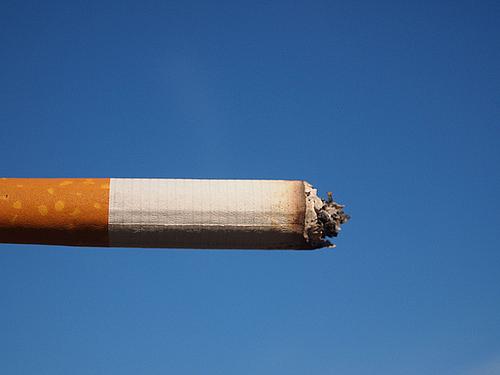A Presidents’ Day tribute to the man who urged the nation to stop smoking

In his short tenure as president, John F. Kennedy made one of the most lasting contributions to public health. He appointed Luther Terry to be Surgeon General of the United States, and Terry turned the world’s attention to the dangers of tobacco smoking.
Fifty years after Terry became the first surgeon general to say, “I would advise anyone to discontinue smoking cigarettes,” I thought it appropriate this Presidents' Day to reflect on the importance of that moment and what it generated.
Let’s start by going back to the smoking culture of the time. In the mid-1960s, more than half of all men and a third of all women smoked. And they smoked a lot. The CDC estimated 4,345 cigarettes smoked per capita in 1963. You could hardly turn on the television, open a magazine or see a film without seeing an advertisement for cigarettes or see someone you admired smoking. Johnny Carson used to smoke cigarettes during his show, and so did his guests.
The tobacco industry also was hugely important to the economies of states that had significant political influence at the federal level. And the industry lobby contributed massive sums to local, state and federal campaigns.
As a result, even though the link between smoking and cancer had been established by scientific studies dating back to 1929, there was no federal level attempt to curb smoking in the United States. In 1962, the Royal College of Physicians in London released a landmark report on the negative health effects of smoking. Afterward, Luther Terry commissioned a panel of experts to review the science, calling it the Surgeon General's Advisory Committee on Smoking and Health. He chaired the committee, and it released its findings on Jan. 11, 1964.
The 150,000-word report found:
In view of the continuing and mounting evidence from many sources, it is the judgment of the committee that cigarette smoking contributes substantially to mortality from certain specific diseases and to the over-all death rate.
Associated Press science writer Frank Carey covered the release of the report and provided what he called a “box score” for some of the findings:
1. Cancer of the esophagus — there is evidence of an association with smoking, but cause and effect have not been decided on the basis of present evidence.
2. Cancer of the urinary bladder — an association with cigarette smoking but not enough evidence to establish a cause-and-effect link.
3. Stomach cancer_no relationship established.
4. Peptic ulcer (including ulcers of the stomach and of the duodenum which links the stomach with the intestines)_an association with cigarette smoking but no cause and effect yet established.
5. Amblyopia, dimness of vision unexplained by any bodily defect — an apparent relationship between this ailment and pipe and cigar smoking — but no cause-and-effect link yet made.
6. Cirrhosis of the liver: — there is increased mortality from this among smokers, but the evidence is not sufficient to establish the cause and effect link.
7. Infant birth weight — women who smoke cigarettes during pregnancy tend to have babies of lower than usual birth weight. But Information is lacking on the mechanism by which this decrease in birth rate is produced.
You can add to that list all of the cardiovascular problems tied to smoking, including damaged arteries, high blood pressure, chronic obstructive pulmonary disease and stroke.
The effects of Terry’s report were immediate and dramatic. The U.S. government started requiring warning labels on cigarettes the next year. Advertising bans followed. More and more states started enacting smoking bans in government buildings and other work places, restaurants and eventually any public indoor setting.
Dr. Anthony Komaroff, the editor in chief for Harvard Health Publications, captured the turning point by writing:
I vividly remember hearing about the Surgeon General’s report on the CBS Evening News. At the time, I was a first-year medical student. Between two-thirds and three-quarters of my fellow students were smokers. By the time we graduated, only 10% remained smokers. The report was one big reason why. The impact of the report was augmented by our experience dissecting cadavers. The lungs of non-smokers were pink. The lungs of heavy smokers were black. That didn’t look healthy, and the surgeon general confirmed that it wasn’t.
Komaroff called Terry one of his heroes. Terry himself had been a smoker, and it had to have been hard for him to come out so strongly against what was then a beloved and entrenched American pastime. We still have a long way to go. Smoking continues to contribute to 6.3 million deaths annually around the world and remains one of the leading risk factors for the death in the United States.
Acting Surgeon General Boris Lushniak recently wrote in the 2014 report on smoking and health, “It is my sincere hope that 50 years from now we won't need another report on smoking and health, because tobacco-related disease and death will be a thing of the past.”
In the United States, that’s actually a possibility. And I think we should salute Terry this President’s Day for having the courage to move the country toward that goal.
Image by Fried Dough via Flickr

